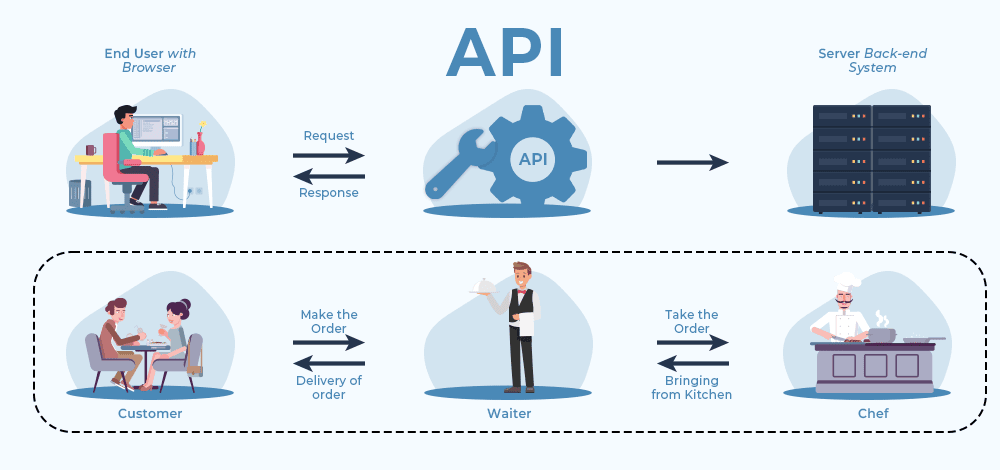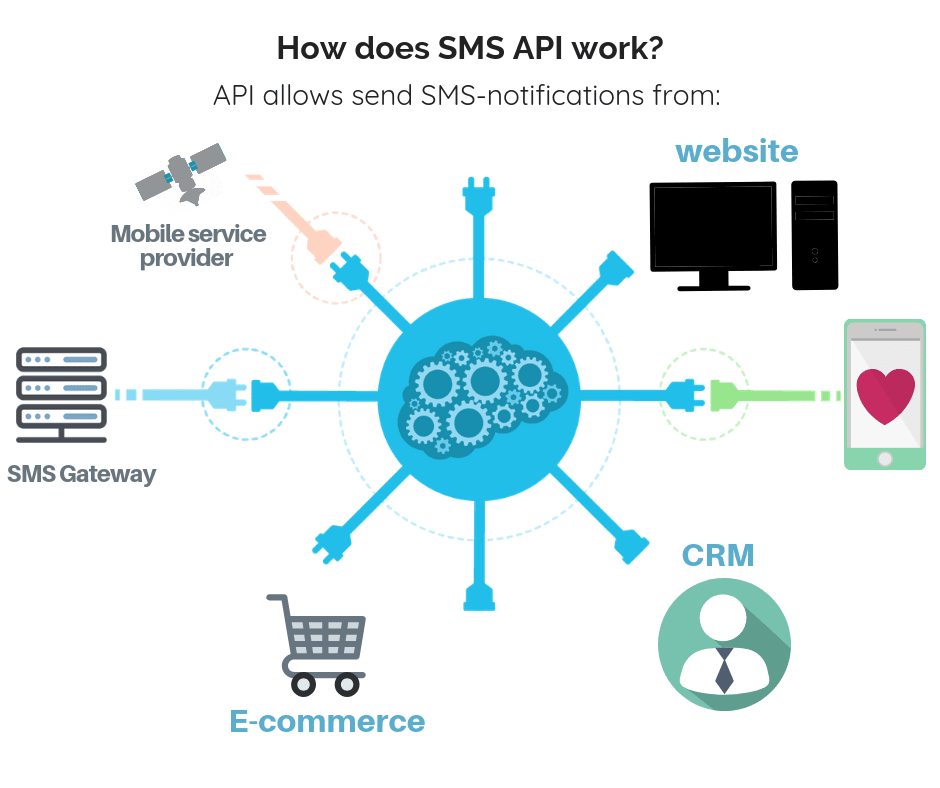Unlocking the World: Global Messaging APIs for Borderless Communication
Ever tried to send a text to a friend overseas and wondered how your text reached them in seconds? Ever asked Siri about the weather and got an accurate response?
The answer to these ‘hows’ and ‘whys’ lies in cable little bits of technology called Application Programming Interfaces, or APIs for short.
These APIs carry out a lot of tasks in the background to make sure our emails get sent, our weather apps update correctly, and much more. In this article, we’re going to talk more about these silent yet powerful communicators called Global Messaging APIs.
Chapters
- API de mensajería global: descripción general
- La historia y evolución de las API
- El papel de las API en la comunicación
- Alcance global: el poder de las API
- Cómo las empresas aprovechan las API
- Casos de uso populares de API
- Tendencias actuales en las API de mensajería
- Elegir la API adecuada para su negocio
- Conclusión
Global Messaging APIs: An Overview

Global Messaging APIs, or Application Programming Interfaces, create a streamlined path for different software applications to talk to each other.
Imagine you’re sending a text from your mobile in New York to a pal in Paris. Your message travels thousands of miles, crossing multiple networks and languages, yet arrives within seconds.
That’s the magic of Global Messaging APIs. They’re like the world’s best translators and postmen rolled into one, taking your message, converting it into a language the receiving application can understand, and then delivering it fast and flawlessly.
The History and Evolution of APIs

Originally, APIs were limited to system-level programming in the 1960s. It was only in the 2000s, with the rise of web services, that APIs really took off. This was when businesses began to expose certain parts of their software’s functionality, fostering integration and innovation.
In 2006, APIs went global, enabling companies to integrate services from anywhere in the world. Today, the proliferation of APIs is such that they’re a fundamental part of almost all modern software.
APIs have evolved to become the glue binding different software applications together, making our digital world interconnected.
The Role of APIs in Communication
So, how do APIs revolutionize communication?
They work as the hidden force behind your daily digital interactions, enabling you to send emails and messages or share files through different platforms. APIs serve as the bridge between different software, allowing them to communicate and work together.
Without APIs, you wouldn’t be able to send a message on WhatsApp, check your email on Gmail, or enable global SMS solutions for your business. APIs ensure seamless integration and interoperability of various applications, making your digital life easier and more convenient.
Global Reach: The Power of APIs
With the power of APIs, you can effortlessly send messages across the globe, breaking down geographical barriers and enhancing your ability to communicate.
APIs aren’t just useful for messaging, they’re the backbone of many digital services you use every day. Imagine checking your weather app or making a transaction online, that’s APIs working behind the scenes, bringing you information from different sources. They make it possible to interact with data from anywhere in the world.
In short, APIs open up a world of global reach, transforming the way you communicate and interact with the digital world.
How Businesses Leverage APIs
APIs allow your business to connect with others globally, integrating third-party services seamlessly. Through APIs, you’re able to leverage the capabilities of other platforms to enhance your own services.
Imagine wanting to add a payment system to your online store. Instead of building one from scratch, you can use an API to integrate a secure, proven system like PayPal.
Or perhaps you’d like to add a weather feature to your travel app. An API can pull data from a weather platform, saving you the time and resources of creating your own weather forecasting system.
Popular Use Cases of APIs
These examples showcase the powerful impact APIs have made on business success.
- Uber: They have integrated Google Maps API for location tracking, thus enhancing user experience.
- Airbnb: They’ve used Twilio’s messaging API for seamless communication between hosts and guests.
- Netflix: Their personalized recommendations? That’s thanks to their robust APIs making sense of viewer data.
- Slack: APIs enable third-party app integration, making it a hub for work-related tools.
Each example highlights how APIs can be leveraged for customer satisfaction, operational efficiency, and business growth. The key is to understand what your business needs, find the right API, and make it work for you.
Current Trends in Messaging APIs
Artificial intelligence plays a vital role in enhancing automated responses and personalizing user experiences. Witness a surge in the use of chatbots, armed with advanced AI, capable of understanding and responding to complex queries.
In addition, expect APIs to offer more advanced analytics, providing valuable insights into customer behavior and preferences. Integration with social media platforms will become simpler, offering seamless communication across multiple channels.
Lastly, with the rise of IoT, messaging APIs will increasingly be used in devices beyond the traditional smartphone or computer. In the future, your fridge might just text you when you’re out of milk!
Choosing the Right API for Your Business
Consider these critical factors:
- Functionality: Does the API offer features that align with your business objectives? It’s not about having the most features, but the right ones.
- Reliability: You can’t afford downtimes in today’s fast-paced digital world. Make sure the API has a proven track record for stability.
- Security: With data breaches on the rise, ensure the API follows strict security protocols.
- Cost-effectiveness: Balance your budget with your needs. An expensive API isn’t necessarily the best.
Final Thoughts
APIs have undeniably become the core component of modern software systems, enabling seamless communication across platforms and geographical barriers.
For businesses, APIs offer a doorway to integration with global services, optimization of operations, and an opportunity to innovate.
Create more and better content
Check out the following resources and Grow!